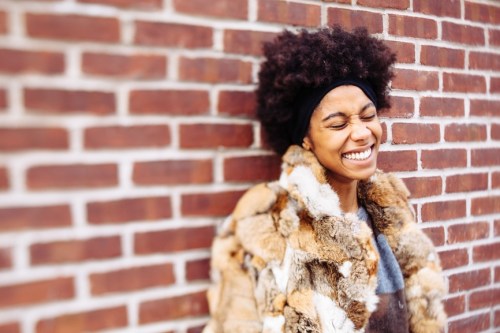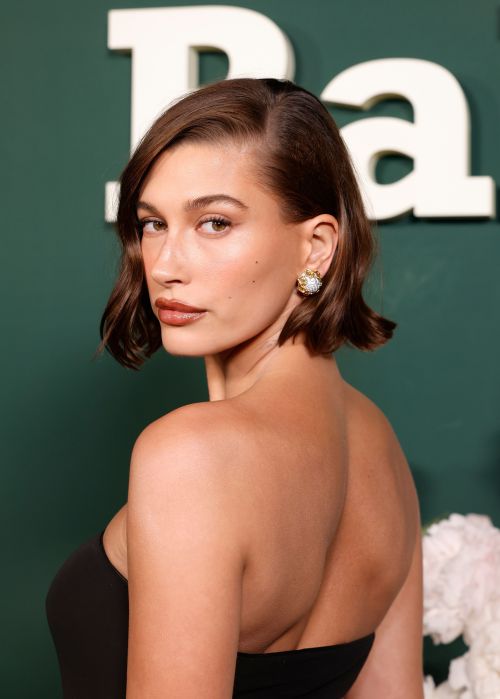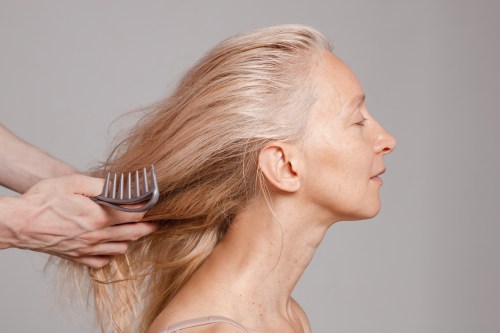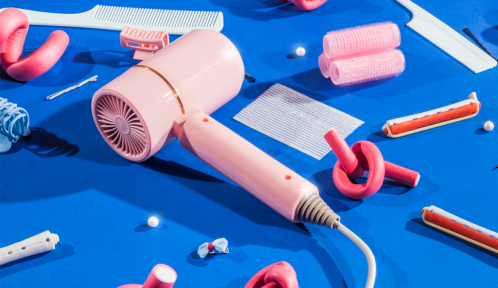Our editors independently select these products. Making a purchase through our links may earn Well+Good a commission
Your Complete Guide to Caring for Curls In Cold Weather
Taking care of curly hair in winter involves using hydrating products and layering oils. Learn how to keep your curls moisturized inside.

Any person with waves or curls knows that hair is a delicate ecosystem. One wrong move and suddenly thirsty curls go extra dry, overly coated curls go limp, and waves go wrong. Curls soak up specific product combinations, water temperatures, care regimens, and climate conditions. I, myself, have considered packing up my life in search of the ideal climate for my hair. The reality is, like your skincare, your curl routine may also benefit from a seasonal switch-up. To help navigate caring for curls in cooler temperatures, we asked hair experts for tips on caring for curly hair in the winter.
Experts in This Article
a hairstylist and owner of Chic Salon Hair Studio
celebrity hairstylist and owner of Butterfly Studio Salon in New York
owner of the 5 Salon Spa
Can you wear curly hair in the winter?
The short answer is, yes, you can wear your curls in the winter. However, the cooler weather does make them more susceptible to damage. “Winter is harder on hair because there is less moisture in the air,” says Kattia Solano, celebrity hairstylist and owner of Butterfly Studio Salon in New York. “Cold weather dries out the hair, and dry heat has no moisture, which makes curly hair limp and textured hair more brittle.”
Judaea Evans, a hairstylist and owner of Chic Salon Hair Studio, says cool air can also cause curls to break. Experts agree that having a thorough routine focused on hydration is important.
How often should I wash my curls in the winter?
Just like our skin, protecting our hair from becoming dry is essential. Extensive dryness can lead to breakage, which can impact growth and retention. According to Ona Diaz-Santin, owner of the 5 Salon Spa, less is more when it comes to winter hair care, “I recommend washing curly hair less frequently in the winter. Washing your hair only 1-2 times a week without overdrying should suffice,” says Santin. Washing our hair less will allow it to maintain natural oils without stripping our hair.
How to keep my curls from drying out in the winter?
Everyone’s curls and preferences differ, but experts say you should focus on hydration, reduce frequent washing, and tailor your products to be cold-weather friendly.
Use hydrating products
Curls can benefit from deep conditioners year-round, but they’re especially helpful when it’s cold out. “Deep conditioners can help repair and restore moisture to the hair, making them beneficial for dry, damaged, or curly hair,” says Satin, adding that how frequently you use a deep conditioner is up to you. “Some deep conditioners are for fine hair, while others may be more suitable for thicker hair. It’s essential to consider your hair’s needs or concerns and always look at the product ingredients.”
Santin also recommends trying co-washing since curls are more prone to dryness, which is basically rehydrating your hair with conditioner between wash days. Some people with curls love the co-washing step and swear by it for moisture; others don’t. Ultimately, this boils down to preference.
According to Solano, changing your product game when the mercury starts to dip is a good idea. “Always have two different types of shampoo that address different issues, like one that treats dry scalp and another for lack of moisture,” she recommends. “I always say step it up with products that have more moisturizing ingredients in the colder months.” Solano also advocates for heavier serums and oils like Shu Uemura Essence Absolue Nourishing Protective Oil ($69), a stylist favorite that can be used as a leave-in, styling aid, or a pre-shampoo treatment.
Consider a steam treatment
Santin says, “Steam treatments provide intense hydration to the hair. The steam helps to open the hair cuticles, allowing moisture to penetrate deeply into the hair shaft.” Doing this step at least once a week can make all the difference. Santin also says that steaming can help brittle curls feel stronger.
Be mindful of your fabrics
While wearing your favorite hat or sweater keeps you warm, they could do a number on your hair. Santin says, “The friction between scarfs, hats, and coats can cause damage to hair strands, leading to breakage and split ends.” If you’re going to wear your hair down, Satin says opting for silk fabrics or polyester might be helpful. On days when you want to wear that wool sweater you can’t part ways with, consider doing an updo hairstyle to protect your hair from friction.
Use oils
If you’ve been skimping on oils, Evans and Santin agree you should start using them more regularly. “Oils keep the shaft shiny and healthy,” Evans says, adding that you can even cocktail oils to lock in moisture. “You can mix oils like coconut and your favorite leave-in conditioner and twist your hair. After a few days, you can unravel your twists, and your hair should look and feel more hydrated.
According to Santin, it’s ideal to look for thicker oils when it’s cold out. “I suggest going for oils with fatty acids, which are wonderful and natural emollients,” she says. Some are heavier than others, so it’s important to play around and find what works for your hair texture.” Avocado oil contains fatty acids, vitamin E, and antioxidants, making it super hydrating for curls.
Use heat protectant if you’re using hot tools
Even if you are using hot tools to stretch your hair before braids or twists, experts recommend using a heat protectant to help moisturize and protect your curls. Some people may prefer using a lightweight protectant mist, while others may prefer a thicker cream. Regardless, if you’re applying heat to your hair, a heat protectant should be in your toolkit.
Use bonnets and scarfs to protect your hair
“Similar to how clothing can damage our hair, so can our cotton pillowcase. Wearing a satin bonnet at night can prevent your hair from getting dry,” Evans explains. Both experts agree that wearing a bonnet isn’t limited to cold weather, and it’s beneficial year-round.
Final takeaway
Curly hair is delicate and requires a bit of extra love and moisture in the winter. Cool weather essentially sucks the moisture from curly hair, making your strands more prone to damage, dryness, and breakage, so replenishing them with deep conditioners, oils, and heat protectants if you’re using hot tools will help keep your hair in tip-top shape even if it’s cold out.
Sign Up for Our Daily Newsletter
Get all the latest in wellness, trends, food, fitness, beauty, and more delivered right to your inbox.
Got it, you've been added to our email list.










